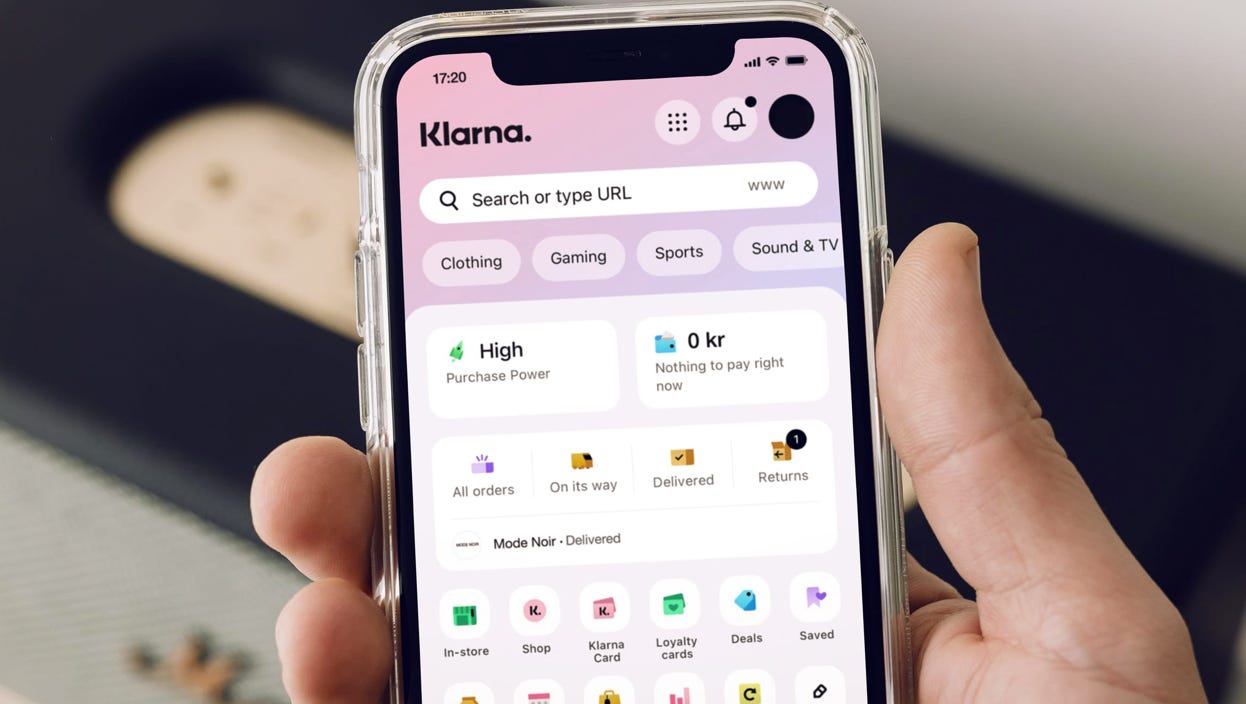As Black Friday, Cyber Monday and the holiday shopping season rolls around, customers look for gifts to buys, deals to find, and more ways to pay than ever. Many retailers are offering payment options that allow customers to spread their purchases over multiple payments or installments, which is known as a Buy Now, Pay Later (BNPL) loan.
Although, customers have long used credit instruments, such as credit cards, private label-card and point of sale (POS) installment loans, to purchase goods and services, BNPL has emerged as an alternative credit method in many developed countries around world, including the United States.
Starting in 2019, BNPL began to gain traction in the US, primarily in online stores as it allowed customers to make a purchase while splitting the transaction into multiple payments over a 6-week period. BNPL combined the digital point of purchase ubiquity of credit cards with the general appeal of no interest charges. As a result, BNPL has gained popularity with customers who enjoy the ease of e-commerce but want the flexibility to pay for purchases over time and are leery of more traditional forms of debt.
Since its launch, BNPL has grown dramatically with payment value growing from $3B in 2019 to $82B in 2022, according to Business Wire. In this post, we look at BNPL as a payment instrument, how it works and the key players in the space.
What is Buy Now Pay Later (BNPL)?
Buy Now, Pay Later (BNPL) allows customers to buy items without paying for the purchase all at once. Instead, customers pay for a portion of the payment upfront, and the remaining cost is spread out over a predetermined number of installment payments. These payments are often interest-free, and the approval process is fairly fast for customers. Different BNPL providers provide different payment plans, but the most popular BNPL model is a “pay-in-four” model, which divides the purchase into 4 equal installments, with the first payment due at checkout and subsequent payment due 2 weeks apart over 6 weeks.
According to the Consumer Financial Protection Bureau (CFPB), 17% of customers have borrowed using BNPL at least once in 2021. A variety of customers are attracted to a flexible way to borrow interest free and make installment payments, but it’s especially popular with the younger generations. A recent study of Gen Z’s payment habits found that this generation makes up 55% penetration in the BPNL space, with 26% saying that they have used the payment method up to 3 times in the last 3 months1.
How does BNPL work?
BNPL lenders act as financial intermediaries that facilitate payments. The BNPL payment process falls into 3 categories: (1) customer acquisition, (2) loan underwriting and (3) repayment.
Customer acquisition
There are 2 types of BNPL customer acquisition models: (1) merchant partner and (2) direct consumer engagement.
🛍️ Merchant partner
In the merchant partner acquisition model, BNPL lenders sign contracts with specific online merchants to embed their product on the retailers’ checkout pages. Only customers that are signed up with a particular BNPL lender can use the BNPL service as part of the merchant’s checkout experience. In return for higher conversion rates, increased basket size and insights, merchants pay a service fee (typically between 2% and 8% depending on the size an industry) to the BNPL provider.
Customers shopping on those merchants’ websites and apps see the option to split their payment into 4 (or 6) equal, interest-free installments. Once the customer has selected their item(s) for purchase and begun the checkout process, the BNPL lender will runs a credit application on the customer.
👥 Direct consumer engagement
While many BNPL lenders acquire the majority of their customers using the merchant partner model, some BNPL lender are shifting towards a direct customer engagement model. According to Bloomberg, Afterpay reports that about 17% of their customers initiated one or more transactions from within their shopping app in February 2021.
In the direct consumer engagement model, consumers preemptively complete the credit application process with the BNPL lender on its proprietary app, before selecting their desired merchant or items. Once the consumer’s credit application is approved, they can receive access to a virtual shopping catalog of merchants to shop at, along with the credit amount provided by the BNPL lender.
BNPL lenders power the direct consumer model using a single-use bank issued virtual credit card that an approved applicant uses to complete the BNPL loan. The virtual card technology provides the BNPL lenders with 2 benefits:
(1) any e-commerce merchant can provide their customers with BNPL payment options, even if they have not signed a specific contract with the BNPL lender and
(2) it allows the BNPL lenders to share in a portion of the interchange fees that are collected from virtual card transactions
Loan underwriting
BNPL lenders require certain information from the customer - such as name, address, phone number, email address and date of birth. Some BNPL lenders may request the last four digits of the customer’s Social Security Number (SSN). The BNPL lender will use this customer information to survey credit profiles and credit scores for the customer, done via a “soft credit” check with the credit bureaus. Based on that information, the BNPL lender will approve or reject the customer’s credit application. If the credit application is approved, the BPNL lender will underwrite the loan, while the merchant is paid in full.
Typically, the BNPL lender will extend limited credit to first-time borrowers, and gradually raise the amount of credit extended as the borrower exhibits positive repayment behavior. For returning BNPL borrowers, the BNL lender may supplement the credit approval decision with the applicants’ prior repayment history with that lender.
Repayment
BNPL lenders typically require their customers to pay a share of the purchase price (typically 25%) as a down payment at checkout. Additionally, many BNPL lenders require their customers to use an existing debit or credit card for down payment.

Since debit and credit card networks provide instantaneous verification that the applicant has sufficient checking account funds (debit card) or available credit (credit card) to cover the down payment, it essentially guarantees that the down payment will be paid. Most BNPL lenders use auto pay with the initial payment method for subsequent payments but will allow customers to change their payment method.
Some BNPL lenders will charge a late fee for missed payments, typically the minimum of a flat fee or a percentage of the missed payment.
How is BNPL different from credit cards?
BNPL loans sounds similar to the credit extended via credit cards as both BNPL loans and credit cards allow customer to pay for purchases over time. In fact, BPNL has been described as “credit cards without the hassles of an application process based on credit scores, card-swiping infrastructure, and separate limits for purchases and cash withdrawals”.
There are key differences between the two credit mechanisms, which explains the appeal of one payment type over the other:
1. Access and ease
Short-term BNPL loans have a high approval rate. According to the CFPB, 69% of applicants between the ages of 18 and 24 years are approved for BNPL loans. Customers seem to prefer BNPL loans if they have trouble getting approved for a traditional credit card due to low credit score or an insufficient credit history.
Credit card approvals are more difficult than BNPL loans, with the approval depending on a variety of factors including credit history and a cosigner if the applicant is below the age requirement (21 years or older). Given the more stringent approval requirements, credit cards typically offer customer higher spending limits compared to BNPL loans.
2. Interest and fees
BPNL lenders often have short-term repayment plans without interest, though BNPL plans have a lower limit compared to credit cards. BNPL lenders don’t charge customer any fees, unless payments are late. BNPL lenders earn money by charging merchants a service fee for the BNPL offering, ranging from 2% to 8% per transaction, which is higher than the processing fees that merchants pay on typical credit or debit card transactions (~ 1.3% to 3.5% for credit cards).
On the other hand, credit cards charge customers interest rates on outstanding monthly balances. According to the Federal Reserve, the average credit card interest rate paid on balances is ~ 23%. In addition, credit cards will charge a late payment fee if the minimum monthly amount is not paid, and premium credit cards charge customers an annual fee.
3. Customer protections
BPNL loans currently lack the consumer protections that are available with credit cards. For example, when customers make purchases using BNPL loans, they don’t get dispute or “chargeback” rights that are available with credit cards. If the customer purchases faulty items or the purchase is a scam, the customer has to contact the merchant (and also the lender) before they can stop making payments and receive a refund.
With credit cards, the dispute process is much easier. Customers can alert the credit card company to stop payments if the payment hasn’t been credited.
The lack of uniform BNPL billing disputes rights has led to customer hurdles (requirements that customer contact the merchant for dispute resolution) and financial harm (requirements to pay the remaining installment while the dispute resolution is pending). BNPL lenders that offer integrated shopping apps or use a direct customer acquisition model are required to follow certain regulations (e.g., Regulation Z) to provide billing dispute and error resolution rights, especially since virtual credit cards are the underlying technology. However, based on a CFPB survey, most BNPL lenders are not following these dispute resolution requirements.
The BNPL market
According to the CFPB, the BNPL loan market has grown 227% between 2019 and 2021. Though this explosive growth has slowed down in recent years, Insider Intelligence expects the market to grow at 14.8% annually from 2023 through 2027.
The key BNPL players in the US market are specialist BNPL apps, such as Affirm, Afterpay, Klarna and Zip. Established payment companies such as PayPal (with Pay their Pay in 4 offering) have also entered the BNPL space.
Criticisms of BNPL
While BNPL market has seen impressive growth, it has also been criticized for instilling a false sense of financial security in customers, resulting in impulsive shopping and overspending.
Currently, the BNPL market is not regulated, though the CFPB has been monitoring BNPL lenders, especially since there has been a spike in delinquencies with 2.39% loan charge offs in 2021. The lack of consumer protections compared to credit cards, leave customers with the burden of making payments for incorrect items or scams, while working through dispute resolution with the merchant.
Additionally, there are concerns that BNPL apps lead to “debt stacking” among customers - where customer take out concurrent BNPL loans at different lenders and may not be able to repay all the loans. Since BNPL is “free” and is integrated into many online experiences, it is easy for customers to sign up for multiple BNPL loans at the same time. BNPL lenders don’t have visibility into an applicant’s borrowing activity, since the lender only pull a “soft credit” check on the customer.
Customers that use credit cards as a BNPL repayment method effectively borrow credit (BNPL) with more credit (credit cards). This could lead to customer overextension with shifting debt between credit products and “hidden interest” by paying BPNL loans (which are typically interest free) with an interest-based credit card.
BNPL loan certainly fulfill a need in the payment market, since they allow customers to spread out their payments. It remains to be seen if and how the BNPL market will be regulated in ways that protect the customers.
Gen Z represents individuals born between 1997 and 2012








